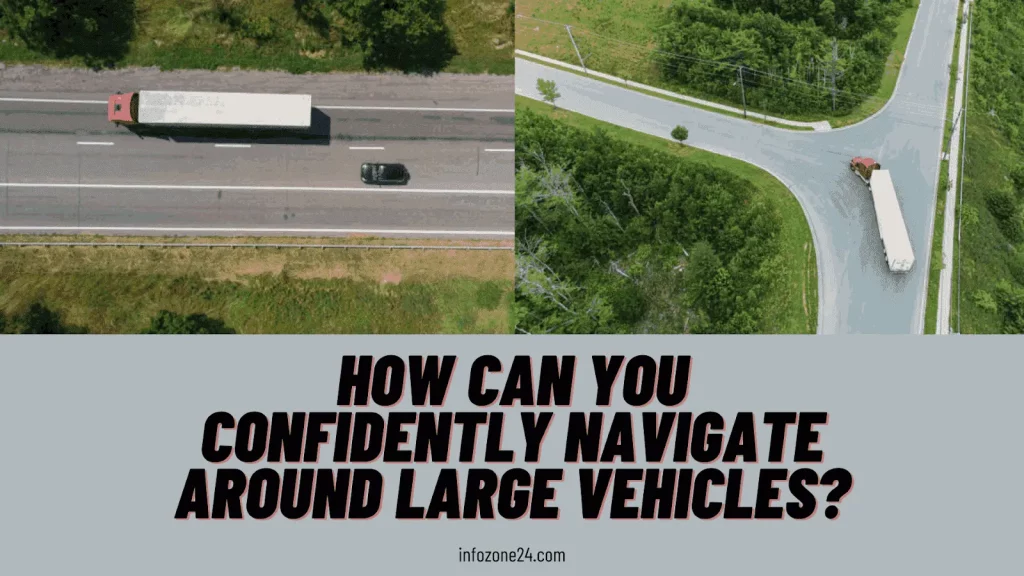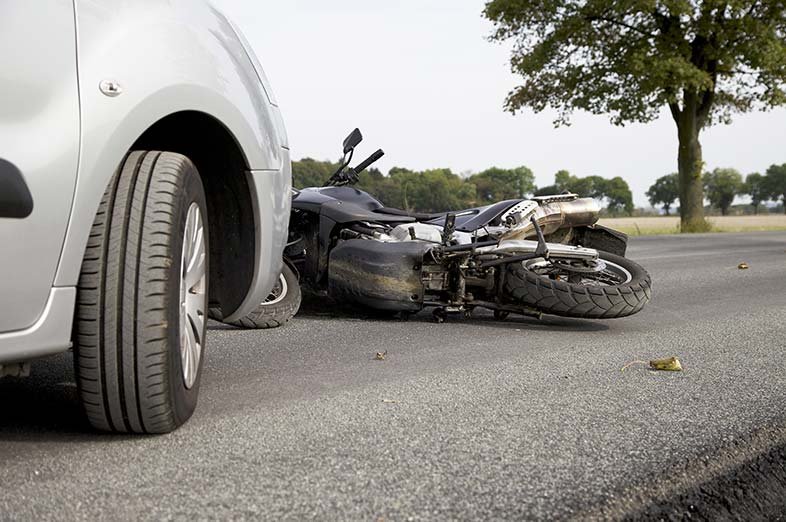Driving on roads with vehicles of different sizes can be intimidating. Specifically, when you find yourselves alongside huge trucks. It’s like being a small fish in a sea full of whales. Large vehicles, like trucks and buses, have specific challenges related to visibility and movability. So, drivers of smaller vehicles must know how to stay safe when passing a truck or any other large vehicle.
This article includes the steps to ensure safety while sharing the road with these giants.
1. You Need to Steer Clear of the Blind Spots (No-Zone)
Every vehicle has blind spots. But with large trucks, these spots are significantly wider. Imagine you’re watching a play from the front row. You can’t see the entire stage, can you? That’s how truck drivers feel.
No-Zone
The areas directly behind, in front of, and along each side, especially near the back, are difficult for them to see. That’s why it’s necessary to stay out of these “no-zones.”
If you can’t see the truck driver’s reflection in their side mirror, they can’t see you either. Always ensure you are visible to the truck driver. Moreover, it’s worth noting that these areas are often referred to as “killing zones” for a reason.
Accidents involving smaller vehicles in truck blind spots can result in catastrophic consequences. It’s important to have awareness and learn defensive driving techniques. So, drivers can avoid these dangerous areas and reduce the risk of accidents.
2. You Should Know that Not Every Moment is Right for Overtaking
Excitement to overtake a slow-moving truck can lead to impulsive decisions. Think of it like trying to skip ahead in a queue. It may get you ahead shortly, but is it worth the risk?
- Large vehicles need more time to speed up, slow down, and stop.
- Always wait for a clear stretch of road before overtaking.
- Make sure that you can see the truck’s entire front in your rearview mirror before moving back into your lane.
It’s important to discuss the possible consequences of impatient driving around large vehicles. Drivers need to know the real-life scenarios and statistics related to accidents caused by reckless overtaking. This can serve as a reminder of the dangers associated with impatience on the road.
3. You Need to Keep Your Distance for Safety
Maintaining a safe distance from a large vehicle is as essential as keeping a buffer while handling fragile items. Trucks require a more extended stopping distance compared to smaller vehicles, especially in wet conditions.
Tailing, or staying too close behind a truck, not only puts you in a blind spot but also risks an accident if the truck brakes suddenly. Similarly, when a truck tails you, it’s safer to change lanes and let it pass.
Follow the “three-second rule” for maintaining space between your vehicle and a truck. Understand the physics of braking distance and the time required for a truck to come to a complete stop. This can highlight the significance of this safety practice.
4. You Must Stay Alert at Turns
Have you ever observed an elephant making a turn? It’s wide and slow. Similarly, trucks need extra room to turn. They often swing wide, which can be misleading.
If a truck signals a right turn, never squeeze by on its right, even if there’s space. The truck’s rear can clip your vehicle or even worse. It’s always safer to hang back and give the truck sufficient space to complete its turn.
Understanding the differences in turning areas between large trucks and smaller vehicles is important. Drives should see the examples and visuals demonstrating how a truck’s rear wheels follow a different path during turns. This can help them understand the need for caution when trucks are making maneuvers.
5. You Need to be Cautious of Large Vehicles on Slippery Roads
Just as ice makes it challenging to walk, wet or icy conditions make it tricky to drive, especially near large vehicles. Rain, fog, or snow can reduce visibility and increase stopping distances. In such situations:
- Reduce your speed
- Increase your following distance
- Avoid overtaking unless necessary
Think of it like walking cautiously on a slippery floor. The extra caution can prevent unwanted mishaps.
Bottom Line
While large vehicles are essential in transporting goods and people, they also demand respect on the road. You need to understand their limitations and adjust your driving habits accordingly. This way, you can ensure a harmonious and safe coexistence on the highway.
Remember, just as in a dance, it’s about understanding your partner’s moves and responding harmoniously, ensuring both parties move smoothly and safely.
Keep Reading: Gas Prices In Canada By Province
Michael C Vang is a passionate blogger. He has been blogging since 2013 on a variety of topics. He is committed to creating informative and engaging content that helps readers learn more about everything.



